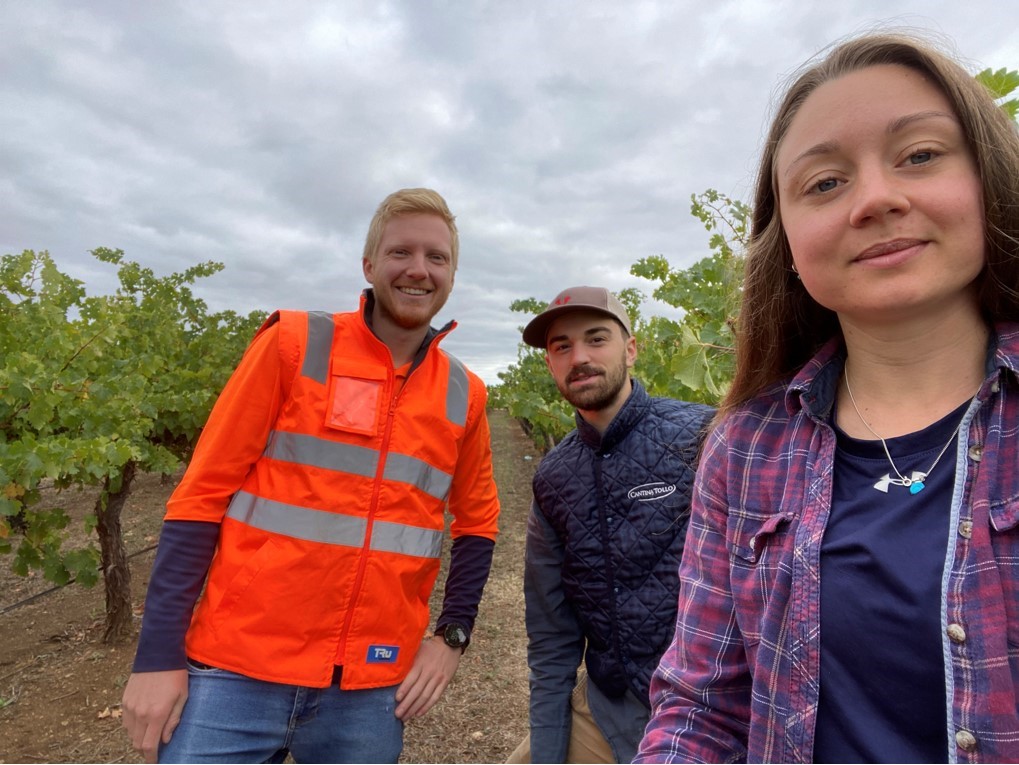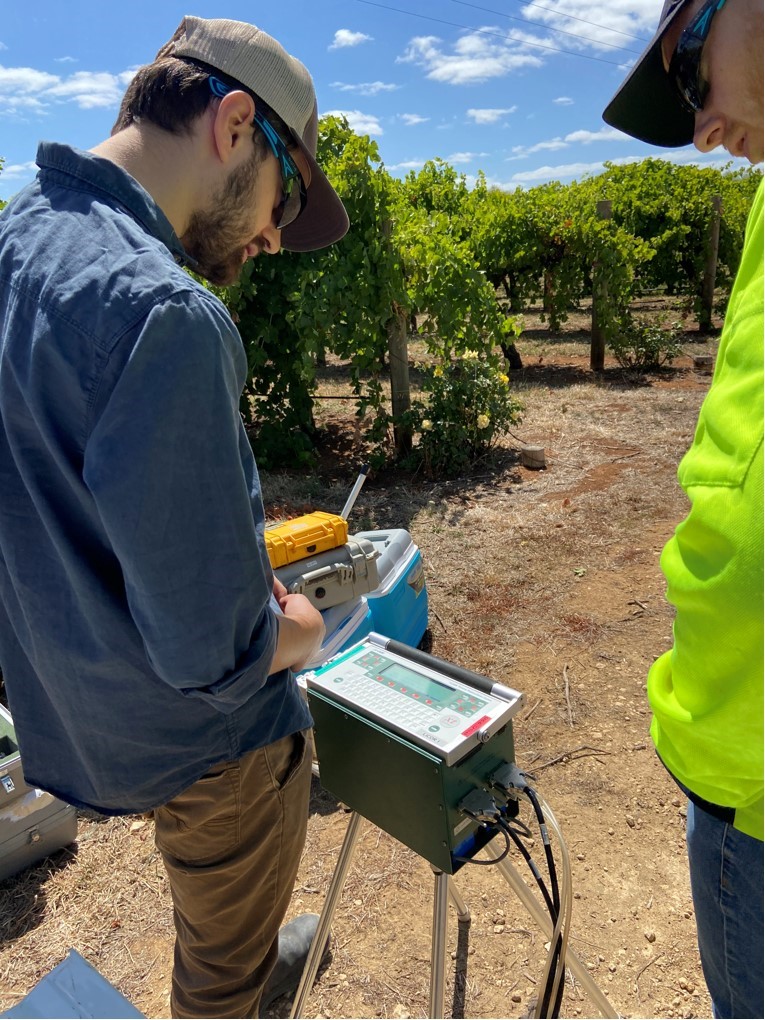By Claire Armstrong
 I carried out fieldwork experiments over the 2020 and 2021 vintages and enjoyed the whole experience thoroughly. I’m not going to glamourise fieldwork because let’s be honest, driving more than 800 kms a week, waking up before sunrise, working beside spiders the size of your hand and sweating through the heat of the summer sun is not an attractive job description. However, being hands-on and seeing where your research is making a difference, as well as working with some of the most passionate and kind people in the Australian wine industry – it is easy to look back and romanticise our time spent in the field. To top it all off, my fellow Centre PhD colleagues Ross Sanders, Pietro Previtali and I got to spend time in a charming and humble part of the Australian countryside, the Coonawarra.
I carried out fieldwork experiments over the 2020 and 2021 vintages and enjoyed the whole experience thoroughly. I’m not going to glamourise fieldwork because let’s be honest, driving more than 800 kms a week, waking up before sunrise, working beside spiders the size of your hand and sweating through the heat of the summer sun is not an attractive job description. However, being hands-on and seeing where your research is making a difference, as well as working with some of the most passionate and kind people in the Australian wine industry – it is easy to look back and romanticise our time spent in the field. To top it all off, my fellow Centre PhD colleagues Ross Sanders, Pietro Previtali and I got to spend time in a charming and humble part of the Australian countryside, the Coonawarra.
For my fieldwork experiments, we implemented vineyard management techniques and looked at whether these changed grape maturity variability throughout berry development and by the time of harvest. I was working on Cabernet Sauvignon grapes, so setting up my experiment in the region where ‘Cabernet is King’ made a lot of sense.
The Coonawarra region can be found in the south-west corner of South Australia and is famous for its unique cigar-shaped strip of Terra Rossa soil (Italian for red soil) that provides ideal grape-growing conditions. The township of Coonawarra is only a cluster of houses, with the main town of the region being Penola – a quintessential Australian country town that welcomes you with open arms. Balnaves of Coonawarra is a family-run winery situated just north of Penola, and they produce quality wines with a focus on provenance.

Undertaking research in partnership with Balnaves was a great experience. My communications with them were short and sweet, letting them know when we would be in the vineyard and how long we needed to borrow their Gator to get around the vineyard. The reply would be as brief as “yes, all good Claire”. Their full trust was instilled in us, and it made our trips just that bit less stressful, especially when last minute changes had to be made due to poor weather or equipment availability. We would have brief ‘meetings’ with the head viticulturist, Pete Balnaves, between the vines or outside the shed doors to discuss the direction and results of the experiments but mostly we were left to get on with our research.
Field work can be fickle and even though we checked the weather constantly, had a set schedule, planned everything to a tee, and booked all the equipment (packing the Ute required two Tetris® enthusiasts), there would be something that threw everything on its head. Nevertheless, through adaptability and teamwork, the data came together and preliminary analysis suggests cohesive results and trends.
A highlight for myself was at the end of the 2020 vintage when we sat in Balnaves’ tasting room, surrounded by their museum wines with head winemaker Jacinta Jenkins and head viticulturist Pete Balnaves, and we discussed our data while tasting the wines we made. That was when all the hard work and long days for 2020 swirled together into one huge sigh of relief.
I would like to say a huge thank you to the Balnaves team for access to their vineyard and insightful conversations as well as ARC TC-IWP students, Pietro Previtali and Ross Sanders for all their Tetris®, driving, snipping and pruning enthusiasm.
Claire Armstrong is a PhD student in the Australian Research Council Training Centre for Innovative Wine Production at The University of Adelaide.
Claire’s research aims to define ways to decrease grape maturity variability via grapevine management practices and to assess the effects of these practices on grape and wine composition and quality. Claire’s first research findings have been published in a Special Issue of the Australian Journal of Grape and Wine Science dedicated to the work of the Centre’s researchers and industry partners.
